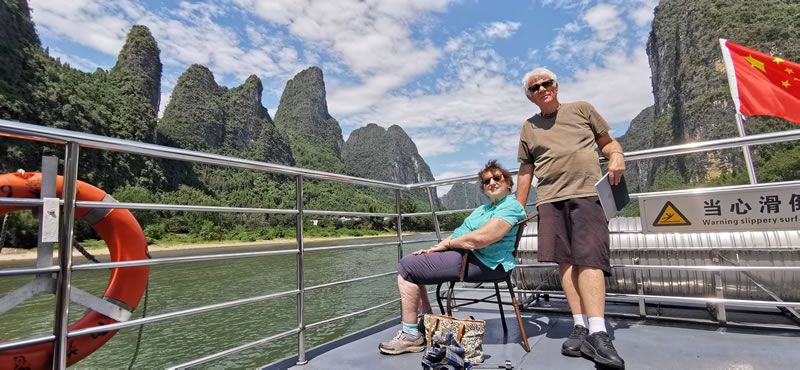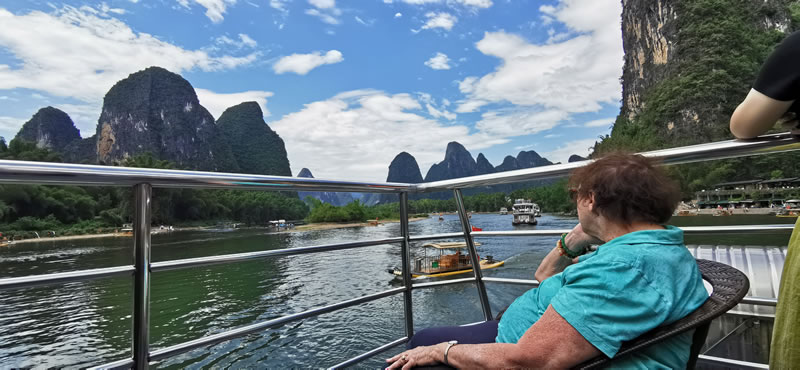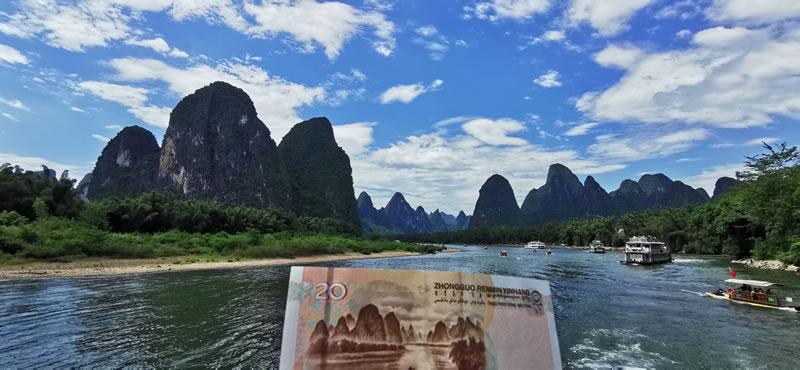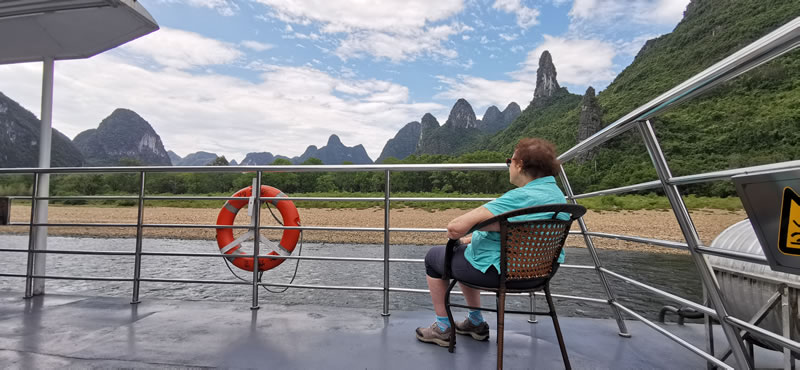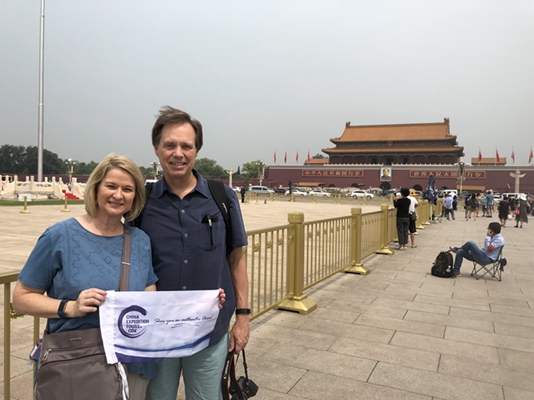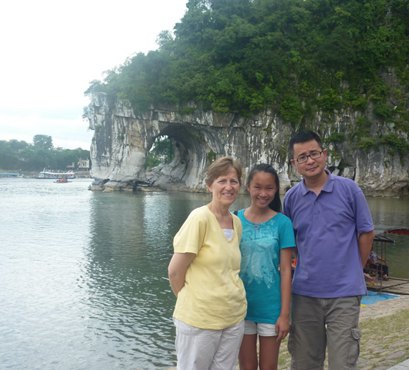Highlights
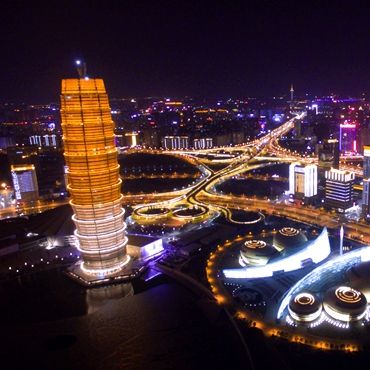 Zhengzhou
Zhengzhou
Highlights
Henan Provincial Museum
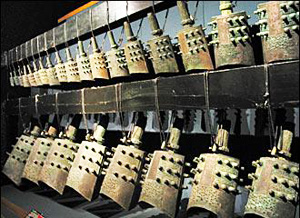
Set up in the year of 1927, Henan Museum is one of the oldest museums in China. Occupying 100,000 m2, Henan Museum has been attracting an increasing number of visitors with 130,000 pieces of rarely seen historic relics displayed. 
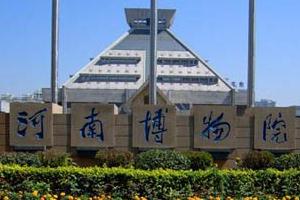
Because of Henan locates in the Yellow River basin, one of the cradles of Chinese ancient cultures, the cultural relic items displayed here are of various styles and of great significance in the study of the Chinese history. As mentioned above, Henan lies on the bank of Yellow River, so she has experienced many badly floods, which, in turn, attests how tough the cultural relics discovered here are.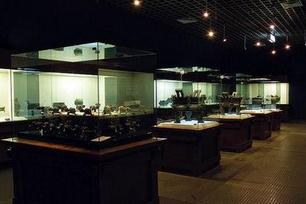

The main architecture here is the magnificent Chinese oldest astronomical observatory that is as tall as 45.5 meters with five floors, which is deem as the center of the Ancient China. The precious historic relics showed around the pyramid-like astronomical observatory are the living fossils for you to learn about the Chinese culture.
Opening Hours: 9:00 -- 17:00 (from Tuesday to Sunday)
Ticket Price: 20 CNY
Location: No. 8, Nongye Road, Zhengzhou
Transportation: Bus No. 32, 39, 42, 61, 69 and 251 will bring you here.
Yellow River Scenic Area
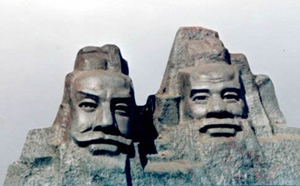
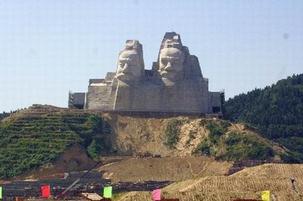

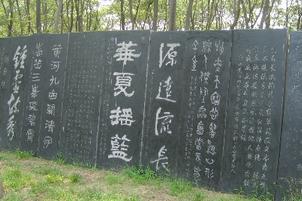
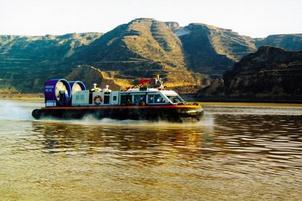
Shang Dynasty Ruins
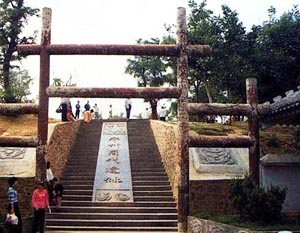
Here are the ruins of the ancient city of 3,600 years old, which are discovered in the year 1950. It is home to the thousands of precious cultural relics, most of which are invaluable jade items reflecting the sophisticated technology. With a 6,960-meter-long wall as an impregnable shield, the Shang Dynasty ruins cover an area of twenty-five square kilometers. 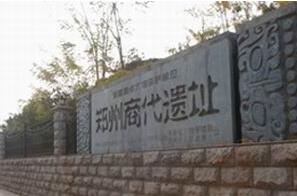

Excavations here, and at other Shang sites, suggest that a ‘typical’ Shang city consisted of a central walled area containing large buildings (presumably government buildings or the residences of important people, used for ceremonial occasions) surrounded by villages. Each village specialized in a product such as pottery, metal- work, wine or textiles. The village dwellings were mostly semi-underground pit houses, while the buildings in the centre were rectangular and above the ground.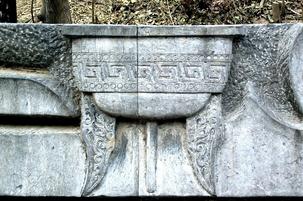
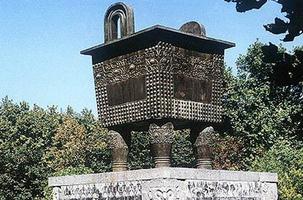
Excavations have also uncovered Shang tombs. These are rectangular pits with ramps or steps leading down to a burial chamber where the coffin was placed and surrounded with funerary objects such as bronze weapons, helmets, musical instruments, inscribed oracle bones and silk fabrics. Some also contained the skeletons of sacrificial animals and humans. Study of these human skeletons suggests they were of a different ethnic origin from the Shang – possibly prisoners of war. This and other evidence suggest that Shang society was an aristocratic dictatorship with the emperor/ father-figure at the apex and did not enslave its own people.
The large-scale excavation in Yin Xu has been continued since the last century. Apart from the 150, 000 pieces of oracles, abundant bronze ware has been excavated, and among them, Simuwu Ding, a 4-legged bronze cooking vessel is the biggest and heaviest bronze ware ever found worldwide. In addition to the oracles and bronze ware, people have also excavated much pottery ware and jade. The excavation is still in progress and great discoveries come forth from time to time. As a famous archeologist has said, more treasures are waiting to be found here.
It is of great significance in not only the historical relics of Chinese culture but also the human civilization of the whole world.
Opening Hours: 8:00 -- 18:00
Ticket Price: 90 CNY
Location: in the suburban of the Zhengzhou City, Henan Province
Transportation: Bus No. 1, 15 and 18 from downtown Anyang to Yin Xu Station will bring you here.
Song Mountain
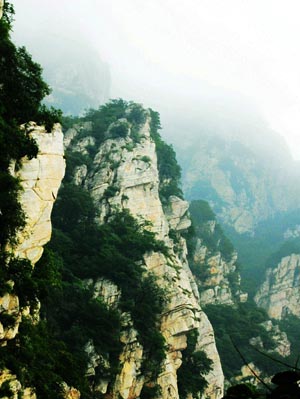
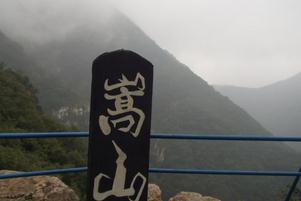

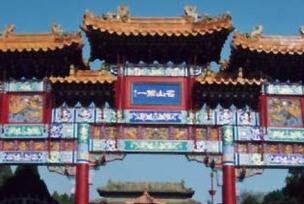
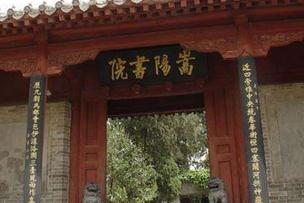
To be exact, you can feast your eyes on the Shaolin Monastery, the Songyang Academy of Classical Learning, the Han Imperial Palaces, Star Observatory Terrace (guanxingtai), and Stone Streams-Confluence (shizonghuiyin).
Mt. Songshan Monastery
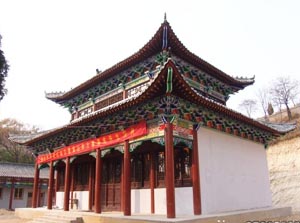
Since the completion around the year 210 BC, the monastery has experienced centuries of history, which, however, has been preserved amazingly well. With a splendid ancient architecture group lying peaceful inside its hug, this monastery enjoys a high reputation and population among the visitors who have ever come to have a close touch.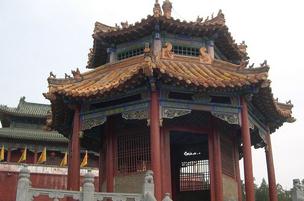
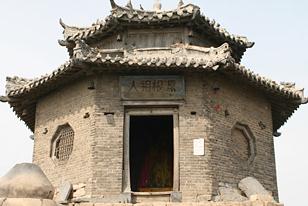
Although being embraced by marvelous mountains in every direction, the monastery is still shinning due to the magnificent buildings that is said to be the largest, oldest and best-preserved architecture group. For such an ancient architecture groups with a large scale of 110,000 m2, every single building with red walls and golden roofs looks like an old man who can tell you stories in the ancient China. 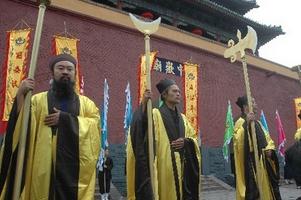
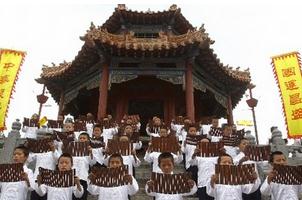
The monastery lies at the southern foot of Mt. Songshan and is hemmed in by mountains. In the monastery stands a pagoda, 40 meters in height and has 10 stories. It is the oldest brick and mud pagoda in China that has attracted an increasing number of tourists.
Opening Hours: 8:00 --17:00
Ticket Price: 30 CNY
Location: Dengfeng City, Henan Province
Transportation: Bus No. 1, 2, 3, 6, 8, and 9 will bring you here.
Shaolin Temple



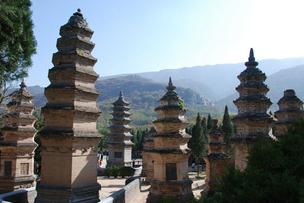
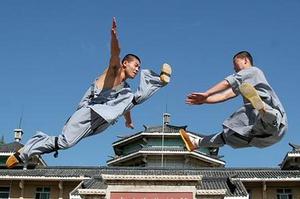
Dengfeng Observatory
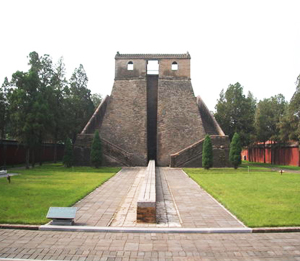
This observatory, built in the Yuan Dynasty (1206-1370), is the oldest well-preserved observatory in China. It enjoys a high reputation in the world for being of great significance in the study of the development of world’s astronomy and architecture.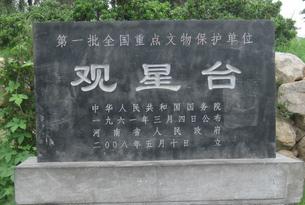
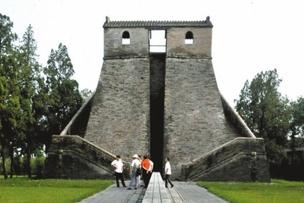
The astronomer Guo Shoujing (1231-1314) designed this particular observatory in 1276, at the beginning of the Yuan period. The building is an angular construction made of brick and stone and stands 9.46 m high. A 31.9-meter-long stone rod stretches out in front of the building and is used to measure the sun's shadow. Based upon his own diagrams and with the aid of information collected by other observatories, Guo Shoujing worked out a calendar that corresponds to the present-day Gregorian calendar. A calculation that he made of the amount of time that it takes the earth to revolve around the sun was off by only 26 seconds. 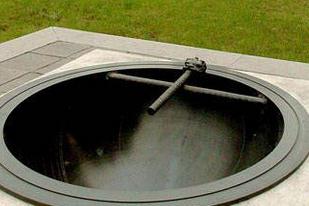
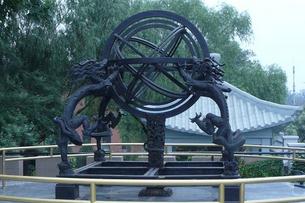
This centuries old observatory is still of great value in the observation of the astronomy, from where you can have a try by using the ancient instruments to learn how the astronomers study the astronomy in the ancient time.
Opening Hours: 8:00 -- 18:00
Ticket Price: 40 CNY
Location: Gaocheng Town, Dengfeng County, Zhengzhou
Transportation: Bus and tour bus will bring you here directly
Songyang Academy of Classical Learning
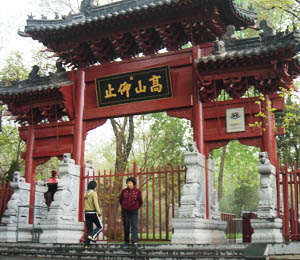
Songyang Academy of Classical Learning, built in the Northern Wei Dynasty (368-534), is a member of the top four Chinese ancient academy of classical learning, together with Yingtian Academy in Suizhou of Henan, Yuelu Academy in Hunan, Bailudong Academy in Jiangxi. Having experienced centuries of changes, it won great reputation for the splendid cultural relics and the beautiful sceneries around.
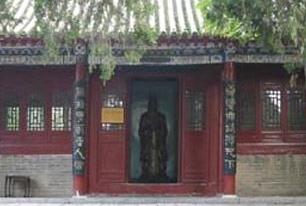
The buildings of the academy are old but elegant. There are over 100 rooms covering more than 10000 square meters. The center axis consists of 5-yard groups. At the west side, there are two high and old cypresses named 'Great General' and 'Second General'. The Great General has a biggest trunk perimeter of 6 meters and a height of about 15 meters, while the Second General has a perimeter of some 12 meters and a height of about 20 meters. They are the oldest cypresses with over 2000 years of history, now they boast the oldest and biggest existing trees of the kind in China. At the gate of the academy on the southwestern side, stands an 8-meter-tall Tang Tablet, which was erected in the 3rd year (744 AD) of the Emperor Xuanzong in the Tang Dynasty. It is the largest stele in Henan Province and famous in Chinese handwriting history.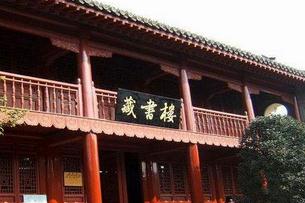
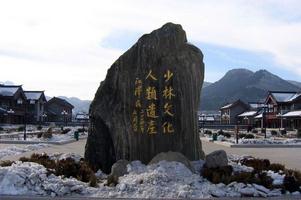
Embraced by steaming mountains, with clear streams circling around, here is a peaceful place for your option to spend the luxurious moment to enjoy the ancient culture and the beautiful landscapes.
Opening Hours: 8:00 --18:00
Ticket Price: 80 CNY
Location: Dengfeng City, Zhengzhou
Transportation: Bus No. 2 and 6 will bring you here.
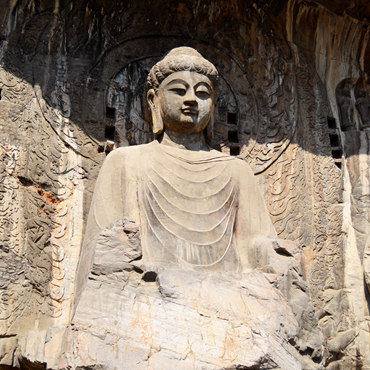 Luoyang
Luoyang
Highlights
Longmen Grottoes
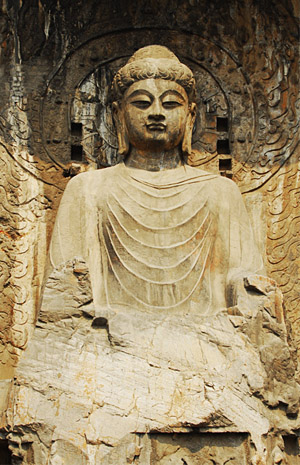
Longmen Grottoes, one of the three greatest grottoes in China, has command of more than 2,000 niches, 100,000 stone sculptures and 3,600 inscriptions, which takes over 400 years to complete. The amount of the stone inscriptions ranks first at the Chinese four famous grottoes (apart from Longmen Grottoes, the others are Yungang Grottoes in Shanxi, Mogao Grottoes in Gansu and Maijishan Grottoes in Gansu), among which the works of calligraphy are the essence parts and the carvings concerning the Buddhist cultures reflect the greatest stone-carving period in Chinese history.
Spanning over 1,000 meters in length, the caves were chiseled on the cliffs of both banks of the Yi River. The scene of Longmen and its surroundings is very beautiful, because the "Longmen Mountain scene" ranks first place of the "Eight Scenic Spots of Luoyang". The caves were first sculptured and chiseled around the year when Emperor Xiaowen moved the capital to Luoyang in Northern Wei Dynasty.
As one of the three great Buddhist treasures, the Buddhist statues in Longmen Caves are exquisitely caved and beautifully shaped, all presenting a vivid appearance of a dignified manner and delicate look. The Buddhist statues in Longmen Caves are an embodiment of a peculiar and extraordinary style of sculpture of Buddhist. Statues of the Chinese people also occupied a very important place in the Chinese art of sculpture. What's more, with broad breadth of spirit, profound implication and beautiful workmanship, the Longmen Caves is a bright pearl in the artistic treasure house of sculpture of the world.
Scattered about the various caves are carved figures of Flying Apsaras, with some of them, light and graceful, riding clouds and mist dexterously, some dancing in the air, holding a plateful of fruits in the hand, some playing music and singing, and others casting flowers and fish about. Longmen is not only renowned for the caves, but also endowed with lush mountains and ridges, springs and waterfalls. The two mountains are covered with green pines and cypresses. Towers and pavilions set each other off. It's a unique scenery area.
Opening Hours:
07:30 -- 18:30 (in spring, summer and autumn)
07:30 -- 17:40 (in winter)
Ticket Price:
120 CNY
Half for students, teaches and the people between 60-69 years
Free for the kids below 1.4 meter, the disabled, the retired, the soldiers, the people over 70 years
Location: 12 km away from Luoyang City
Transportation: Bus No. 53, 60 and 81 will bring you here directly (1 CNY and 40 minutes).
White Horse Temple
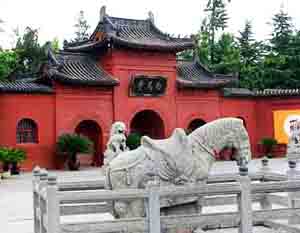
As the first Buddhist temple built with the assistance of Government in the Eastern Han Dynasty (25-220), White Horse Temple (Baima Si), the cradle of Chinese Buddhism, is of great significance in the development of the Buddhist in China. Having witnessed centuries’ changes, White Horse Temple has been reconstructed for several times, among which the one conducted at the order of the Emperor Wu in Tang Dynasty (618-907) was the most impressive one.
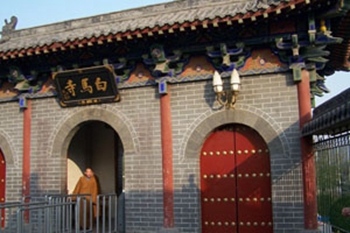
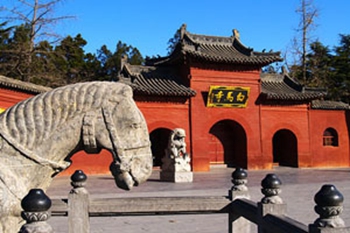
In addition to the exquisite lifelike Buddha statuses in magnificent hall, the typical oriental architecture designs and the towering pines flourishing around the peaceful temple, there are some special scenic spots for you to experience how Emperor Ming in Han Dynasty practiced his study and how the eminent monk Tian Zhu practiced the translation of the Buddhist classics from India.
White Horse Temple is a rectangle courtyard facing south. The gate of the White Horse Temple was built in Ming Dynasty (1368 - 1644) and it is three arches side by side. Covering a total area of 40, 000 square meters, the temple mainly consists of Tianwang Hall, Great Buddha Hall, Daxiong Hall, Jieyin Hall, Qingliang Terrace and Pilu Pavilion, which are all distributing along the north-south central axis.
Great Buddha Hall is the second hall of the temple. It is the place where the grand Buddhist ceremonies are held. The existent hall dates from the Ming Dynasty (1368 - 1644). In its center sits erect a statue of Sakyamuni which is closely flanked by two Bodhisattvas Wenshu and Puxian, and his two disciples Ananda and Jiaye. Behind stand the statue of Avalokitesvara.
In the southeast of the hall, a huge bell is hung from the beam. It was said that when the bell is struck, the toll could be heard far away. More interesting is that once the bell is tolling, the one in Bell Tower in Luoyang Old Town will response it quickly due to the sympathetic vibration. 'Horse Temple Bell', one of the eight scenes in Luoyang city was named after it. The hall also house eighteen Arhats that are lifelike in modeling and unique in gesture and are treasures in Buddhist arts of the Yuan Dynasty.
Opening Hours: 7:30 -- 17:30
Ticket Price:
35 CNY
Half for students, teaches and the people between 60-69 years
Free for the kids below 1.4 meter, the disabled, the retired, the soldiers, the people over 70 years
Location: 12 km away from Luoyang City
Transportation: Bus No. 56 will bring you here directly (I hour)
Guanlin Temple

Built in the Han Dynasty (B.C. 202-220), Guanlin Temple, covering 120,000 m2, was built in memory of Guan Yu, a general with a respectable loyalty in the Han Dynasty. Around the tomb of Guan Yu inside the Guanlin Temple, there are hundreds of towering old pines, from which the name Guanlin that meaning a wood of pines, is derived and owing to which numerous visitors have come here to pay respect to Guan Yu in the past 1700 years.
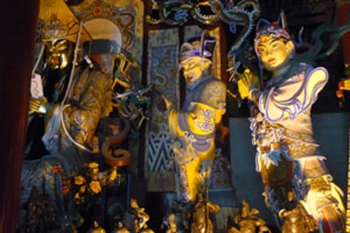
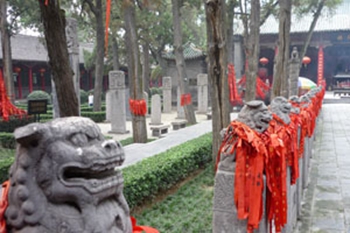
Guanlin Temple is located right in Guanlin Town, eight kilometers south of Luoyang city and is also called General Guan's Tomb, which is the memorial temple and the tomb for Guan Yu (160 - 219 AD), a famous general of the Kingdom of Shu during the Three Kingdoms Period (220 - 277 AD). Guanyu originally came from Shanxi province and was also called Guan Yunchang. It was said that after Sun Quan, the king of Wu Kingdom, killed Guan Yu, he put Guan's head in a box and sent it to Luoyang in an attempt to blame the murder on Cao Cao, the king of Wei Kingdom. Cao Cao saw through Sun's trap and was not fooled. He held a ceremonious burial for Guan and buried the head with a carved wooden body to the south of the city.
Guan Yu became a legendary hero in Chinese folktales because of his loyalty, bravery and faithfulness. He was also respected as 'Wu Sheng' by Chinese emperors. Temples were built for him throughout the country, and he was honored as a god. Portraits or pictures of Guan Yu can be found on the doors of Chinese houses during the Lunar New Year because people believe he protects the home.
The construction work of this temple complex began in 1595, during the reign of the Ming Emperor Wanli. The complex contains several halls, an octagonal pavilion and Guanyu's tomb. Inside the halls are pictures and statues, mainly devoted to the Story of the Three Kingdoms. More than seventy stone tablets with calligraphic inscriptions are also found here. A five-meter-high stone stele with inscriptions written by emperors from different dynasties is found in the octagonal pavilion. add it to your China tour packages today.
Opening Hours: 08:00 -- 17:00
Ticket Price: 40 CNY
Location: Guanlin Town, Luolong Zone, Luoyang City
Transportation: Bus No. 15, 39, 53, 55, 58, 60, 69 and 81 will bring you here directly.
Luoyang Peony and Wangcheng Park
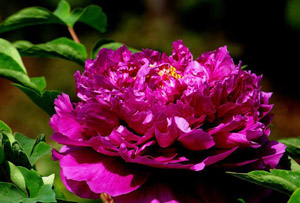
Covering 700,000 m2, Wangcheng Park is a unique park that was built based on the historic site and the largest comprehensive park in Henan Province. With an antique-style tower gate, red walls, and green tiles, Wangcheng Park is full of the breath of culture.
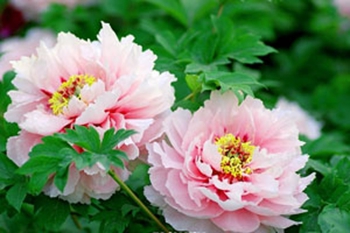
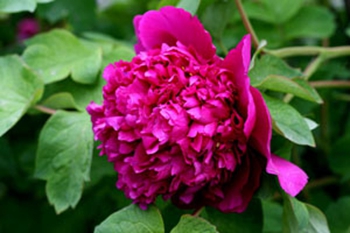
Yellow River Xiaolangdi Scenic Area
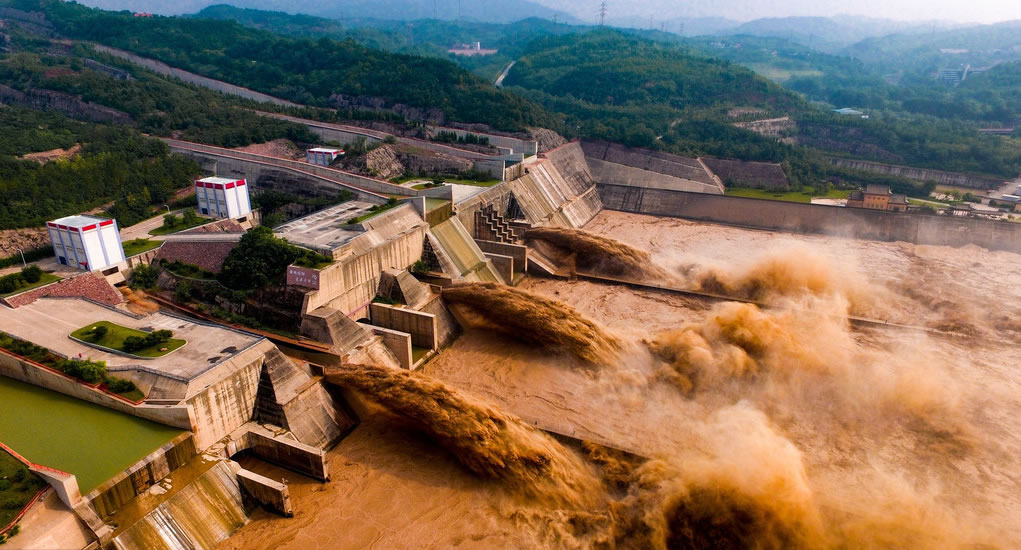
Xiaolangdi Scenic Area is the most marvelous part of the yellow river, which covers more than 60 natural sceneries and cultural relics that are characterized by the gorge spectacles. The picturesque mountain groups with flourishing trees and blooming flowers form precipitous but harmonious landscapes, which is so charming that people name here the Three Gorges of Yellow River. In addition, in the waters as wide as 300 square kilometers, boats are crossing on the peaceful lakes and streams from one island to the other.
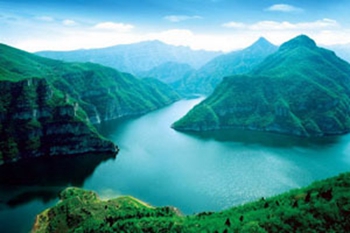
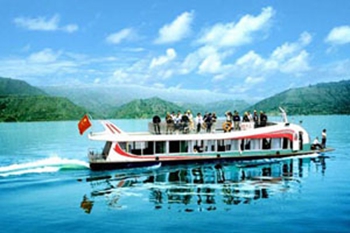
Lying in Mengjin County 40 kilometers (about 25 miles) north of Luoyang City, Henan Province, Xiaolangdi Scenic Area is located in the exit of the last gorge in the middle reaches of Yellow River. The Xiaolangdi Multipurpose Dam Project has become a dominating feature of this stretch of the mighty river and the three gorges to be found here are a major attraction.
The Dam Project is an eye-catching feature of the entire scenic area. In total, the cost of the project has been RMB 42 billion and it is not only a milestone in the history of the continuing effort to tame the Yellow River, but it is also a masterpiece in world hydroelectric engineering history. It creates three firsts in the world and six firsts in China. This vast construction is 1667 meters (about 1823 yards) long with a height of 154 meters (about 500 feet). The whole project consists of ten intake towers, nine flood and sediment tunnels, six power tunnels and an underground powerhouse. The Thousand Islands are more outstanding and amazing seen from the picturesque mountains.
Opening Hours:
8:00 -- 17:00 in winter
7:00 -- 19:00 in summer
Ticket Price:
40 CNY
20 CNY for the students, the retired and the people between 60-69 years old
Free for the soldiers, the tour guide, the journalists and the people more than 70 years old
Location: Jiyuan City, Henan Province
Transportation: Bus from Luoyang Railway Station and Dongbian Bus Station will bring you here.
The Three Gorges of Yellow River
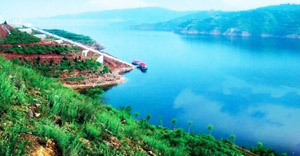
Along the spectacular Yellow River, the marvelous gorges together with the picturesque landscapes around make a shinning fairyland where numerous tourists have come for wonderful memories after traveling around the amazing grottoes, peaceful temples, natural lakes, mysterious caves and the fabulous hydroelectric station. Three Gorges, covering 40 square kilometers, are the essence of this scenic area on the Yellow River. Each gorge has its own characteristics.
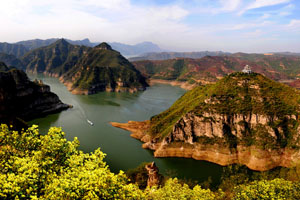
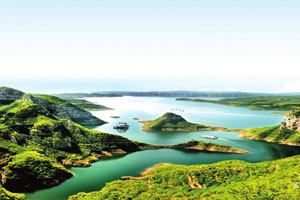
Luoyang Ancient Tombs Museum
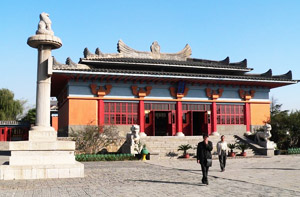
Based on the historic site, the Luoyang Ancient Tomb Museum appeals to an increasing number of visitors by the abundant precious relics and the magnificent but plain architectures with the antique designs of Han Dynasty (B.C. 202-220) and North Wei Dynasty (386-534). The historic site mainly consists of tombs from Han Dynasty to North Song Dynasty (960-1127), the amount of which is 22.
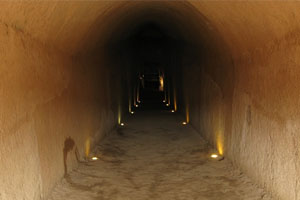
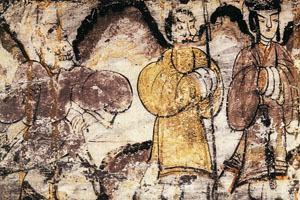
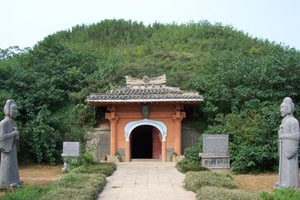
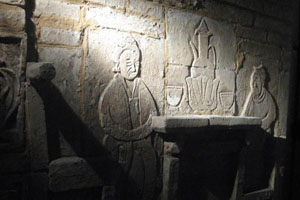
The Studio of Thousand Tang Tablets
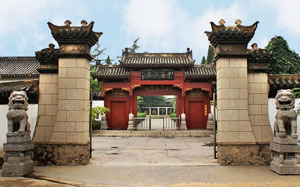
The Studio of Thousand Tang Tablets is actually the unique museum in China that based on the epitaphs, where totally 1419 epitaphs are displayed. Among the precious exhibitions, 1911 epitaphs are the heritages of Tang Dynasty (618-907), which is the reason why the museum is called by the present name. Without any doubts, the epitaphs are one of the most convinced proofs of the history. Therefore, we can learn the society from the descriptions on the epitaphs about the royals, the officials, the celebrities, the common people and all the significant events of different times.
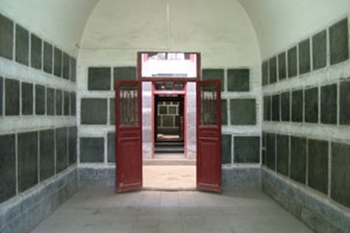
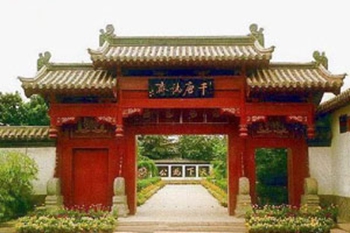
On arriving at the peaceful museum, you will amazingly have a strong feeling of being surrounded by a tense breath of culture and history--just like going back to the ancient time in a Time Machine.
Opening Hours: 8:00 -- 18:00
Ticket Price: 30 CNY
Location: Xinan County, Luoyang City
Transportation: Long-distance bus from Luoyang will bring you to Xinan County.
Visit the cultural relics and historical sites in Zhengzhou and Luoyang,and learn the famous Shaolin Kungfu,so why not?
Itinerary
You will be picked up at you hotel in the morning. The first stop is the [Henan Provincial Museum] which is one of the largest historical museums in China. Then take car/van to the Shaolin Temple in Dengfeng. On the way, visit the famous Taoist monastery-[Zhongyue Temple], to feel the traditional Chinese dream of purity and tranquility. Then arrive at[Shaolin Temple], the birthplace of Chan Buddhism-cradle of Shaolin Kungfu. After the visits, drive to Luoyang.
Stay overnight in Luoyang.
Meals included: Lunch
Today we first visit the[White Horse Temple]. After lunch you will next visit [Longmen Grottoes], one of the three largest grottoes in China. You will then be driven back to Zhengzhou and brought to your hotel.
The tour ends when you’re transferred back to your hotel in Zhengzhou.
Meals included: Lunch
Pricing & Accommodation
-
 US Dollar
US Dollar -
 Euro
Euro -
 GB Pound
GB Pound -
 CA Dollar
CA Dollar -
 AU Dollar
AU Dollar -
 HK Dollars
HK Dollars -
 Renminbi
Renminbi
| 1 person | 2-5 persons | 6-9 persons | ≥10 persons | Single Room Supplement | |
| First Class Tour | $456 | $391 | $352 | $299 | $20 |
| Comfortable Tour | $428 | $385 | $342 | $293 | $14 |
| Standard Tour | $387 | $350 | $328 | $289 | $10 |
* Price in every box above is for each person.
* Price is in US dollar. It may vary a little bit according to US dollar exchange rate fluctuation, car fuel price change and government tax adjustment, etc.
* The price is only for your reference and it is subject to seasons, high or low.Please send us your inquiry if you are interested.
Inclusions / Exclusions
Inclusions:
- Personal English-speaking Guide
- Experienced Driver + comfortable Private car/van/bus for the driving part
- Admission fee for the attractions enclosed in the square brackets in the itinerary.
- Meal specified in the itinerary.
Exclusions:
- Gratuities, Tips to local people, the guide and driver
(Although not compulsory, if you think your guide and driver have done a good job at the end of the tour, we suggest you tip them at you own decision to show your appreciations.) - Other Personal Expenses.
Important Information
How to Dress (only for reference):
Comfortable walking shoes
Long, loose and comfortable pants
Shorts for summer months (June – September)
Shirts/T-shirts
Warm clothes (Fleece, Jacket, hat and gloves etc.) for Nov-April
Umbrella or waterproof jacket in a cloudy day or rainy day
Cover for backpack or plastic bags to keep clothes dry in case of rain
What to Bring (only for reference):
Wet wipes / Moist towelettes
Sun hat, Sun block, Sunglasses
Insect Repellent
Bottled Water
Small towel
Camera, film and memory chip, battery
Binoculars
Per Person



